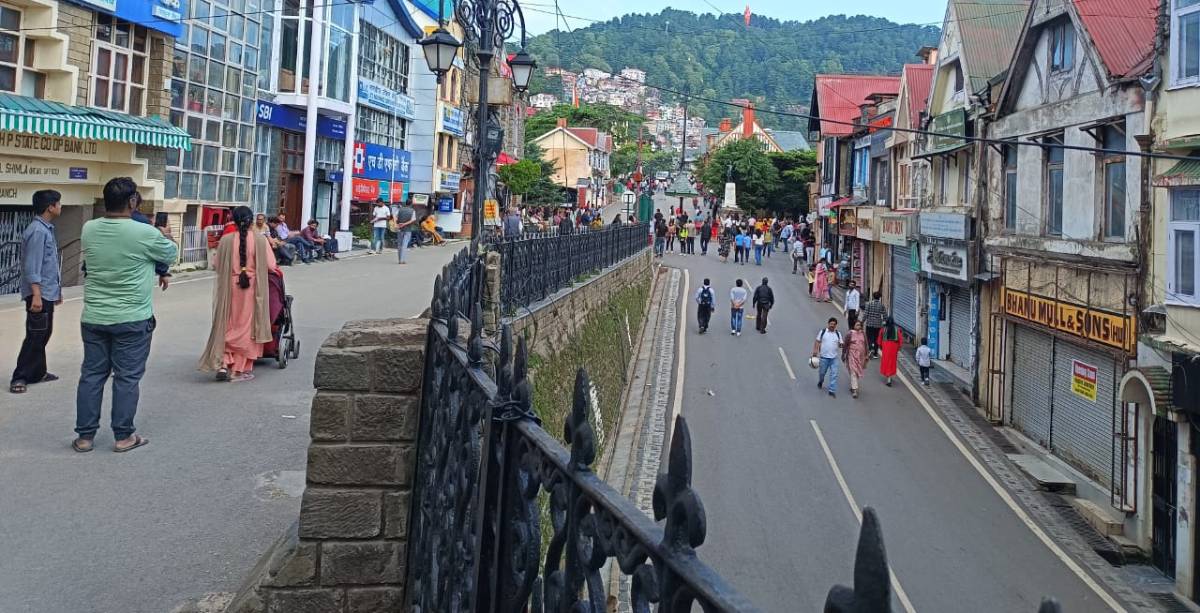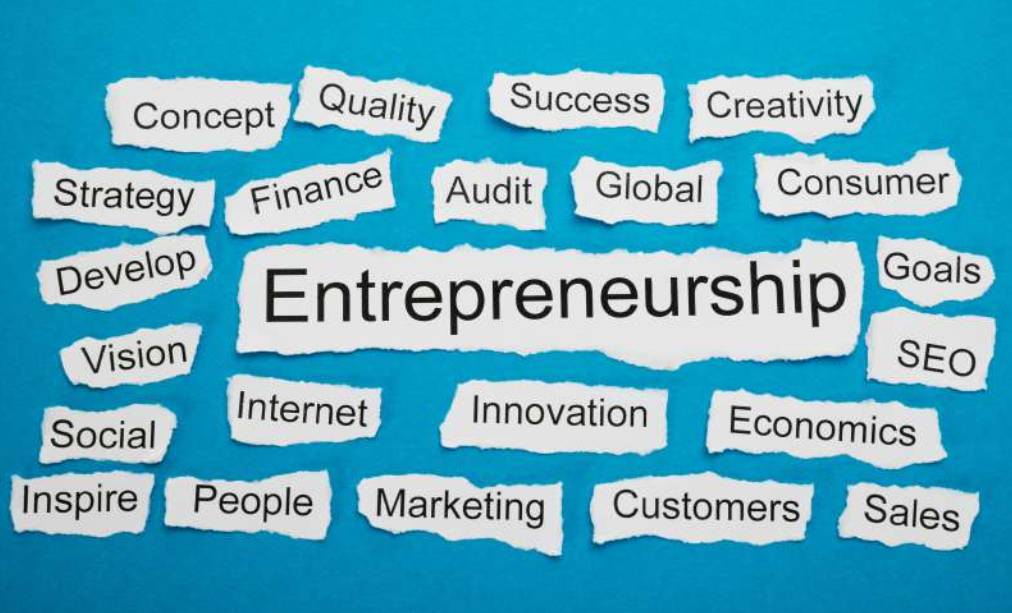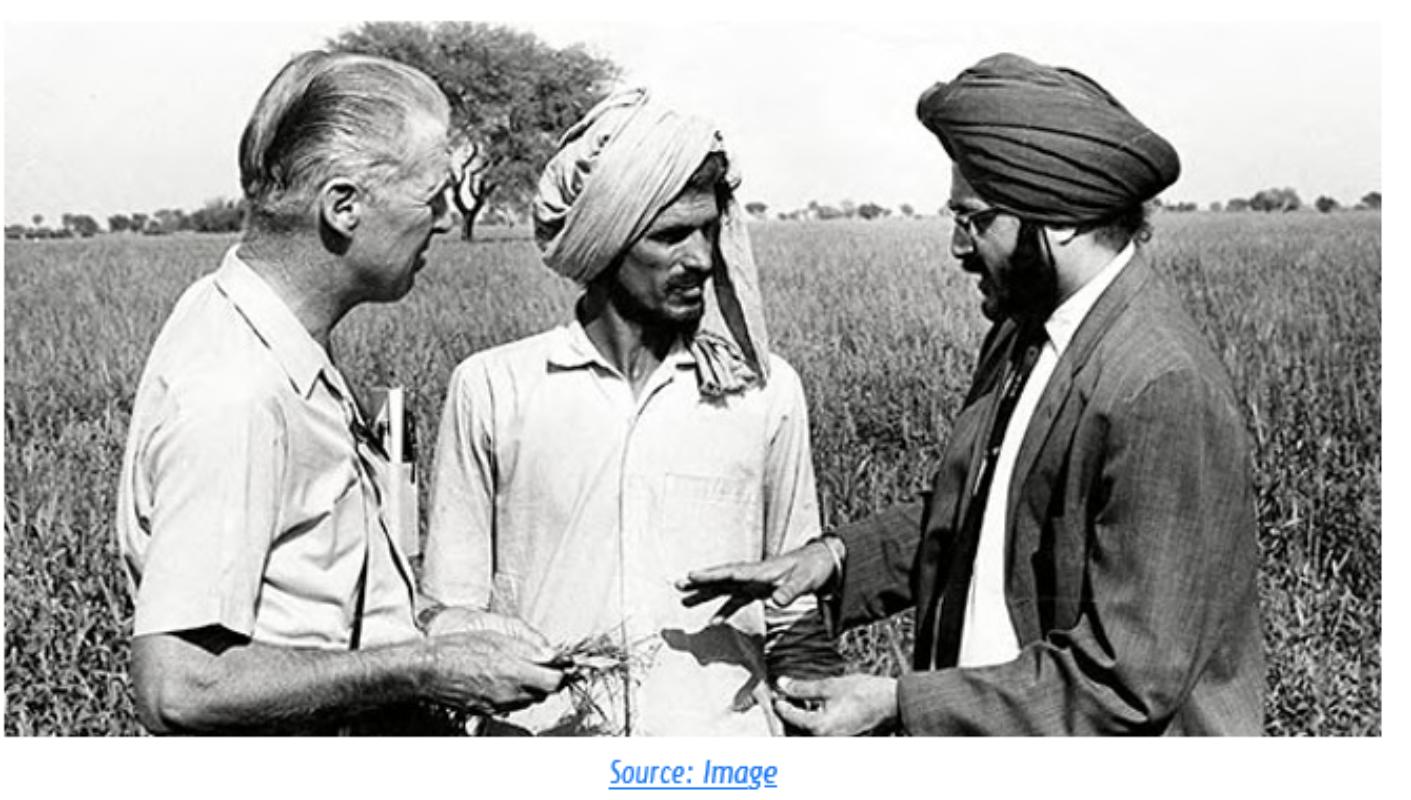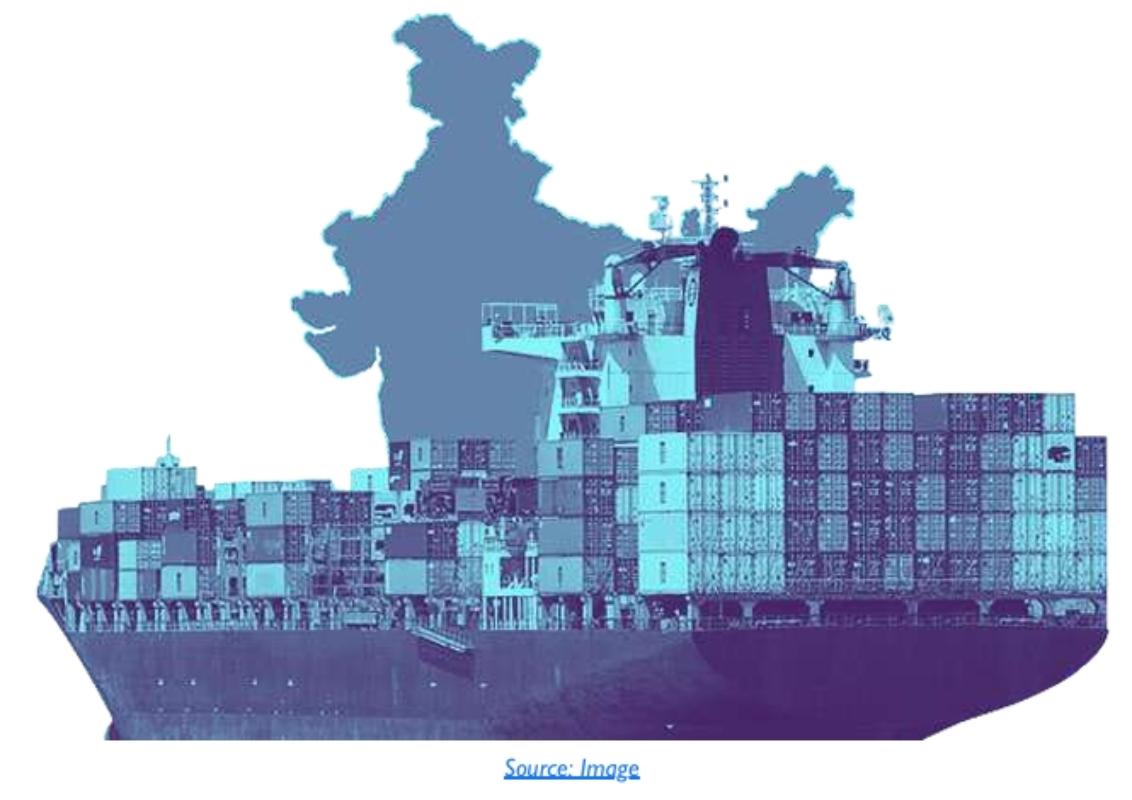Abstract
The Micro, Small and Medium Enterprise (MSME) sector contributes significantly to the economic and social development of the country by fostering entrepreneurship and generating the largest employment opportunities after the agricultural sector. The participation of all categories of society (General, OBC, SC, and ST) is seen in this sector. This study is an attempt to elicit the major issues and challenges which had an impact on the SC-ST entrepreneurs due to the pandemic COVID-19. The data was collected from the 15 districts from 100 entrepreneurs. The study was confined to the social group of SC and ST.
About thirty percent of the respondents felt that their business would be adversely impacted to the extent of ninety percent or more. None of the respondents felt that their business had been stable or improved. Sixty percent of the entrepreneurs who had established their units more than ten years ago felt that their business was adversely affected to the extent of ninety percent or more. The younger enterprises which had been established less than two years ago, were less pessimistic and assessed the damage to their business in lesser quantum.
Fifty-four percent of the respondents felt that it would take at least six months for them to re-establish. While forty-one percent of the respondents estimated that more than a year would be required to re-establish their business. The enterprises in the age group of less than two years seemed to be more confident to bear not only the blunt of Corona, but also their ability to re-establish themselves in a lesser time than estimated by the older enterprises.
About twenty nine percent of the respondents who had not taken any loan desired for the new loans from the banks. The demand for new loans was more from the SC aspirants than ST entrepreneurs. Twenty-four percent of the respondents who had already availed the loans had expressed their desire for additional /enhancement in credit limits. The prime demand (27 percent) of the respondents from the government was for getting relaxations in their electricity bills and lease rent charges. This demand was more pronounced in the ST category. It was seen that the lack of adequate capital and lack of raw material, were the predominant concerns of the SC-ST entrepreneurs.
The SC and ST enterprises have relatively less proportion of membership of any trade associations and had less knowledge about re-scheduling of their loans as announced by banks. Hence, the approach of ‘one size fits all’ becomes detrimental factor for the growth of MSME in the nation. There is an urgent need for concerted efforts on this part because the entrepreneurs from SC and ST categories not only contribute towards the economy and employment of the nation, but they also play a pivotal role in the reinforcement of the Indian social fabric.
Introduction
The Micro, Small and Medium Enterprises (MSME) sector has emerged as a highly vibrant and dynamic sector of the Indian economy over the last five decades. It contributes significantly to the economic and social development of the country by fostering entrepreneurship and generating the largest employment opportunities at comparatively lower capital cost, next only to agriculture. MSMEs are complementary to large industries as ancillary units and this sector contributes significantly to the inclusive industrial development of the country. The MSMEs are widening their domain across sectors of the economy, producing a diverse range of products and services to meet demands of domestic as well as global markets.
The MSMEs face acute challenges, such as: the dominance of dwarf enterprises lack of flexible labor policies, loads of infrastructure bottlenecks and market competitiveness, lack of proper training and skill development, access to technology, institutional credit, etc. The COVID-19 pandemic has further aggregated the fragile health of MSMEs in India. The participation of all categories of society (General, OBC, SC, and ST) is seen in this sector.
As per the Ministry of MSME, GoI Report 2018-19,1 the socially backward groups owned almost 66.27 percent of MSMEs, though the bulk of that can be attributed to OBCs owning in 49.72 percent. The representation of SC and ST owners in the MSME sector was low at 12.45 percent and 4.10 percent, respectively. In rural areas, almost 73.67 percent of MSMEs were owned by socially backward groups, of which 51.59 percent belonged to the OBCs. In urban areas, nearly 58.68 percent belonged to the socially backward groups, of which 47.80 percent belonged to the OBCs.
The analysis of enterprises owned by socially backward groups in each of the three segments of the MSME sector reveals that the Micro sector had 66.42 percent of enterprises owned by socially backward group, whereas Small and Medium sectors had 36.80 percent and 24.94 percent of enterprises owned by socially backward groups respectively.
| Table 1: Category wise MSME distribution (in %)2 | ||||||
| S. No. | Gen | SC | ST | OBC | Total | |
| 1 | Manufacturing Enterprises | 61.1 | 7.9 | 2.6 | 28.4 | 100 |
| 2 | Service Enterprises | 57.4 | 9.6 | 3.2 | 29.8 | 100 |
| 3 | Total Enterprises | 58.9 | 9.0 | 2.9 | 29.2 | 100 |
The data from the UAM site reveals that more than one crore units have so far been registered under UAM till 19th June, 2020. The ownership of the MSME does not seem to be in proportion to the prevailing caste wise population in the nation. There could be due to a plethora of reasons. Nonetheless, the low proportion of ST and SC in the MSME business calls for a paradigm shift in therelated policies and initiatives to encourage the excluded strata of the society to be active partners in the ‘Make in India’ campaign. Amongst Manufacturing and Services segments, the General category ownership was seen more in the Manufacturing segment, while that for SC, ST, and OBC, it was the Services segment.
Survey Method and Sample
A survey was conducted (May 2020) to know the major issues and challenges which had an impact on the SC-ST MSMEs due to the pandemic COVID-19. The data, in a pre-drawn questionnaire, was collected from the 15 districts from 100 entrepreneurs. The study was confined to the entrepreneurs from the group of SC and ST.
Business Details
The proportion of female and male entrepreneurs was 15 and 85, respectively. Respondents engaged in the Manufacturing sector constituted of 25 percent, while those in the Service sector comprised 75 percent of total samples. Amongst the two categories (SC/ST) of the respondents, the proportion of SC and ST was 73 percent and 27 percent, respectively.
The majority (88 percent) of the respondents were not affiliated to any kind of trade association. This was more pronounced in the Manufacturing sector when compared to the membership in Services sector. In contrast to this, only 50 percent of the General and OBC entrepreneurs were not affiliated to any trade association3.
Staff Strength before Lockdown
| Table 2: Staff Strength before lockdown (In %) | ||||
| S. No. | Staff /Sector | SC | ST | Total |
| 1 | None | 30 | 33 | 31 |
| 2 | Less than 10 | 47 | 44 | 46 |
| 3 | Between 11-50 | 21 | 22 | 21 |
| 4 | More than 50 | 3 | 0 | 2 |
| Total | 100 | 100 | 100 | |
a) About 31 percent of the respondents did not have any employees associated with them. This was more pronounced in the case of ST entrepreneurs. In contrast to this, only 8 percent of the General and OBC entrepreneurs did not have any employees4.
b) It could be inferred that in SC and ST owned enterprises, 77 (31+46) percent of the units had less than 10 employees.
c) It was seen that only in SC category 3 per cent of the entrepreneurs had the staff of more than 50. Whereas in case of General and OBC entrepreneurs this proportion was 7 percent. 5
Impact of COVID-19 on Business
Impact of COVID- 19 on Business
| Table 3: Impact of COVID-19 on Business (In %) | ||||||
| S. No. | Impact / Est. year of Enterprise | >20 years | 10 to 19 years | 3 to 9 years | <2 years | Total |
| 1 | Down by more than 50% | 0 | 0 | 30 | 43 | 30 |
| 2 | Down by more than 75% | 40 | 40 | 33 | 39 | 35 |
| 3 | Down by more than 90% | 60 | 60 | 36 | 13 | 33 |
| 4 | Business has been stable and improved | 0 | 0 | 0 | 0 | 0 |
| 5 | Difficult to estimate now | 0 | 0 | 1 | 4 | 2 |
| Total | 100 | 100 | 100 | 100 | 100 | |
a) The respondents were quite apprehensive about the impact of COVID-19 on their businesses. About 33 percent of the SC and ST respondents and 71 percent of General and OBC respondents felt that their business would be adversely impacted to the extent of 90 percent or more6.
b) None of the respondents felt that their business had been stable or improved. Whereas in case of General and OBC category of entrepreneur, 4 percent of the respondents reported stable or growth in their business7.
c) On closer examination, it was seen that 60 percent of the entrepreneurs who had established their units more than 10 years ago felt that their business was adversely affected to the extent of 90 percent or more.
d) While the relatively young enterprises which had been established less than 2 years ago, were less pessimistic and assessed the damage to their business in lesser quantum of – down by more than 50 percent.
How long would it take to re-establish the business?
| Table 4: How long would it take to re-establish the business? (In %) | ||||||
| S. No. | Time required / Est. year of Enterprise | >20 years | 10 to 19 years | 3 to 9 years | <2 years | Total |
| 1 | More than 6 months | 40 | 20 | 54 | 65 | 54 |
| 2 | More than 1 year | 60 | 60 | 42 | 26 | 40 |
| 3 | More than 3 years | 0 | 0 | 1 | 0 | 1 |
| 4 | Difficult to estimate now | 0 | 20 | 3 | 9 | 5 |
| Total | 100 | 100 | 100 | 100 | 100 | |
a) 54 percent of the respondents felt that it would take at least 6 months for them to re-establish. While 41 percent of the respondents estimated that a year or more would be required to enable them to come back into the business. These estimation of time periods to bounce back were better than as expressed by the General and OBC entrepreneurs8.
b) On closer examination, it was seen that 60 percent of the entrepreneurs who had established their units more than 10 years ago; felt that it would take at least 1 year for them to able to re-establish.
c) It was again interesting to note that the relatively young enterprises, which had been established less than 2 years ago, they were more optimistic and estimated the recovery of their business in 6 months.
d) In other words, it is important to conclude that the enterprises in age group of less than 2 years seemed to be more confident to bear not only the blunt of Corona, but also their ability to re-establish themselves.
Staff Expected to be Retrenched
| Table 5: Staff expected to be retrenched (In%) | ||||
| S. No. | Staff /Sector | SC | ST | Total |
| 1 | No change | 49 | 52 | 50 |
| 2 | Less than 30 % | 8 | 19 | 11 |
| 3 | About 50% | 7 | 0 | 5 |
| 4 | About 75% | 4 | 0 | 3 |
| 5 | Not Applicable | 32 | 30 | 31 |
| Total | 100 | 100 | 100 | |
a) 50 percent of the total respondents were of the opinion that they would not like to curtail their employees after resumption of the business. The humanitarian consideration was paramount in this decision of theirs.
b) It was also amazing to see that proprietors were eager to support many of their laid-out employees by providing basic food requirements for them and their families.
c) Only 3 percent of the respondents said that they would have to curtail about 75 percent of their existing employees. The curtailment of the staff was only seen in the SC category. The corresponding figure for General and OBC entrepreneurs was 7 percent9.
| I had got some work orders from the Gram Panchayat to construct Toilets. These were to be constructed from April 2020 onwards. I had procured the raw material for the same. In anticipation of this work, I paid advance wages to 70 of my employees to enable them to tide over the impendingcrisis. However, with imposition of Lockdown I was unable to execute the order, which subsequently got cancelled. I had to bear the losses but did not recall the money from employees.
– Lokesh Rathore, Construction (Service Sector), Ujjain |
Constraints on Revival and Support Expected from the Government
What are the Major Constraints to Commence the Business?
For this question, 197 responses were received. The responses were categorized into 4 different Sectors of the enterprises and mapping was done accordingly in percentages (Table 6).
| Sector / Constraints | Lack of Raw Material | Lack of Staff | Lack of Opportunity like marriage, seasons | Lack of adequate Capital | Lack of Government permission | Lack of transport facilities | Lack of Buyers | Total |
| Construction | 25 | 18 | 14 | 21 | 9 | 11 | 4 | 100 |
| Manufacturing | 21 | 4 | 15 | 21 | 6 | 21 | 11 | 100 |
| Servicing | 12 | 5 | 17 | 24 | 12 | 15 | 15 | 100 |
| Trading | 25 | 4 | 8 | 27 | 6 | 8 | 23 | 100 |
| Total | 21 | 8 | 13 | 23 | 8 | 13 | 13 | 100 |
a) The major constraint visualized by the entrepreneurs in the Construction sector was the lack of raw material.
b) In the Manufacturing sector, the lack of raw material, adequate capital, and lack of transport facilities were indicated to be equally essential constraints.
c) In Servicing sector, the lack of adequate capital was the prime constraint.
d) Those entrepreneurs who were engaged in the Trading sector felt that the lack of raw material and adequate capital would be a major issue of concern for them.
e) Overall, it was seen that the lack of adequate capital and lack of raw material, were the predominant concerns of the SC-ST entrepreneurs.
Support Expected from the Government
There were 147 responses received from the 100 respondents on this account. The responses were converted into percentages (Table 7).
| Table 7: Support expected from the government (In%) | |||||
| S. No. | Expectations / Category | SC | ST | Total | |
| Central government | |||||
| 1 | Health coverage as available under Ayushman Bharat to all my employees | 1 | 0 | 1 | |
| 2 | Support for basic needs | 15 | 17 | 16 | |
| 3 | Enhanced period for payment of GST | 8 | 15 | 10 | |
| 4 | Government to contribute to PPF of MSMEs having 50 or more staff | 12 | 2 | 10 | |
| State Government | 0 | 0 | 0 | ||
| 5 | Incentives for lease rent, electricity bill, | 26 | 29 | 27 | |
| 6 | Provide more cost effective and competitive technology | 1 | 0 | 1 | |
| 7 | Incentives in form for marketing and transportation | 22 | 32 | 24 | |
| 8 | Can’t answer | 15 | 5 | 12 | |
| Total | 100 | 100 | 100 | ||
a) The 27 per cent of the responses desired that the government should give them relaxations in their electricity bills and lease rent charges. This demand was more pronounced in the ST category. The responses from General and OBC category of entrepreneurs also prioritized the same issue10.
b) The next most important expectation from the government was to help the entrepreneurs in the marketing of their products and ensuring the availability of the convenient transport arrangements. The demand of ST entrepreneurs on this account was more in comparison with the demand of SC respondents.
c) About 16 percent of the total responses desired that grant be made available for the staff of the struggling entrepreneurs so that the various basic consumption needs of workers/labors could be met to a certain extent.
| Entrepreneurs do not need any major assistance from the government. It is their labors/ workers which are in dire need of support from the government. Hence, government needs to address their problems on priority.
– Swapnil Charjkani, Pharma (Service sector), Agar Malwa |
Financing
Have you applied for the rescheduling of the loan?
| Table 8: Have you applied for Rescheduling of Loan? (In%) | ||||
| S. No. | Rescheduling of Loan /Sector | SC | ST | Total |
| 1 | No | 7 | 15 | 9 |
| 2 | Yes | 30 | 37 | 32 |
| 3 | Bank did not cooperate | 7 | 0 | 5 |
| 4 | Not aware of such facility | 3 | 4 | 3 |
| 5 | Not availed such loan | 53 | 44 | 51 |
| Total | 100 | 100 | 100 | |
a) 51 percent of the respondents had not availed any loan from the banks. Some of the respondents were categorically apprehensive about the banks giving them loans while others reported that they prefer not to take any loan.
b) Amongst the respondents who had taken loan (i.e., 49 percent of total) it was seen that the majority (32 percent) had sought rescheduling of their credit.
c) About 3 percent of the SC and ST respondents were not at all aware of the new arrangements put into place by RBI for MSMEs. While in case of General and OBC entrepreneurs lack of awareness was confined to 1 percent only11.
Support expected from the Banks
| Table 9: Support expected from the Banks (In%) | ||||
| S. No. | Expectations / Category | SC | ST | Total |
| 1 | Waiver of at least 50% of credit on lines of Farm waivers | 14 | 9 | 13 |
| 2 | Waiver of Interest payable for 1 year | 14 | 18 | 15 |
| 3 | Re-scheduling of credit for at least 1 year | 10 | 12 | 11 |
| 4 | Additional / Enhancement in credit limits (WC) | 18 | 39 | 24 |
| 5 | New loan | 35 | 15 | 29 |
| 6 | Can’t answer | 9 | 6 | 8 |
| Total | 100 | 100 | 100 | |
a) 29 percent of the respondents who had not taken any loan expected the new loans from the banks. The demand for new loans was more from the SC entrepreneurs than ST entrepreneurs.
b) 24 percent of the respondents who had already availed the loans had expressed their desire for additional / enhancement in credit limits. The demand was more pronounced in ST category
c) Waiver of Interest payable for 1 year was also the other primary expectation from the banks. This demand was more pronounced in SC category entrepreneurs.
d) The study revealed that the utmost requirement of SC and ST entrepreneurs was ‘sanction of new loan’. In case of General and OBC category of entrepreneurs the prime requirement was the ‘waiver of interest on loan’12.
e) While conducting telephonic interviews, the prospective loan applicants strongly voiced their concern in getting timely credit from the banks.
Conclusion
Even before the pandemic, SC and ST entrepreneurs have had their problems in terms of getting access to institutional sources of credit. It was seen that the SC and ST enterprises, when compared with status of enterprises belonging to General and OBC categories, have relatively less membership with any trade associations, and have lesser knowledge about re-scheduling of their loans as announced by banks.
The biggest constraint in re-booting MSMEs as identified by the respondents was ‘lack of adequate capital’, this was true for all categories of the entrepreneurs. The utmost expectation from the government for all the categories of entrepreneurs was similar, i.e., ‘relaxations in their electricity bills and lease rent charges’.
While the GoI has announced a number of measures for MSME revival, there is an urgent need for concerted efforts to ensure that SC/ST entrepreneurs get their due share of both the concessions and revival incentives and funding.
| We expect the government to support the weavers, on the lines it has been supporting the farmer community, for access to credit, access to modern technology and better marketing.
-Mr. Ranjeet Koli, Saree manufacturing (Manufacturing Sector), Ashoknagar |
Footnotes:
1 Annual Report 2017-18, Government of India, Ministry of Micro, Small and Medium Enterprises
2 https://udyogaadhaar.gov.in/UA/Reports/StateBasedReport_Categorywise.aspx?st=2
3 Impact of COVID-19 on MSMEs (Results of a survey conducted in May 2020) by RGICS, New Delhi
4 Impact of COVID-19 on MSMEs (Results of a survey conducted in May 2020) by RGICS, New Delhi
5 Impact of COVID-19 on MSMEs (Results of a survey conducted in May 2020) by RGICS, New Delhi
6 Impact of COVID-19 on MSMEs (Results of a survey conducted in May 2020) by RGICS, New Delhi
7 Impact of COVID-19 on MSMEs (Results of a survey conducted in May 2020) by RGICS, New Delhi
8 Impact of COVID-19 on MSMEs (Results of a survey conducted in May 2020) by RGICS, New Delhi
9 Impact of COVID-19 on MSMEs (Results of a survey conducted in May 2020) by RGICS, New Delhi
10 Impact of COVID-19 on MSMEs (Results of a survey conducted in May 2020) by RGICS, New Delhi
11 Impact of COVID-19 on MSMEs (Results of a survey conducted in May 2020) by RGICS, New Delhi
12 Impact of COVID-19 on MSMEs (Results of a survey conducted in May 2020) by RGICS, New Delhi








